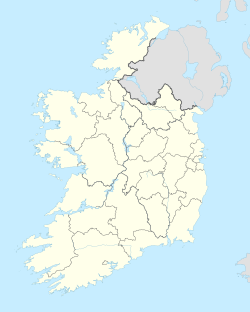Fore Baile Fhobhair (Irish) Demifore | |
|---|---|
 Cattle at Milltown | |
 Barony map of County Meath, 1900; Fore is in the northwest, coloured pink. | |
| Coordinates: 53°44′N7°09′W / 53.73°N 7.15°W | |
| Sovereign state | Ireland |
| Province | Leinster |
| County | Meath |
| Area | |
• Total | 171.5 km2 (66.2 sq mi) |
Fore (Irish : Baile Fhobhair), also called Demifore, [1] is a historical barony in north-central County Meath, Ireland. [2] [3]
Contents
Baronies were mainly cadastral rather than administrative units. They acquired modest local taxation and spending functions in the 19th century before being superseded by the Local Government (Ireland) Act 1898. [4]

